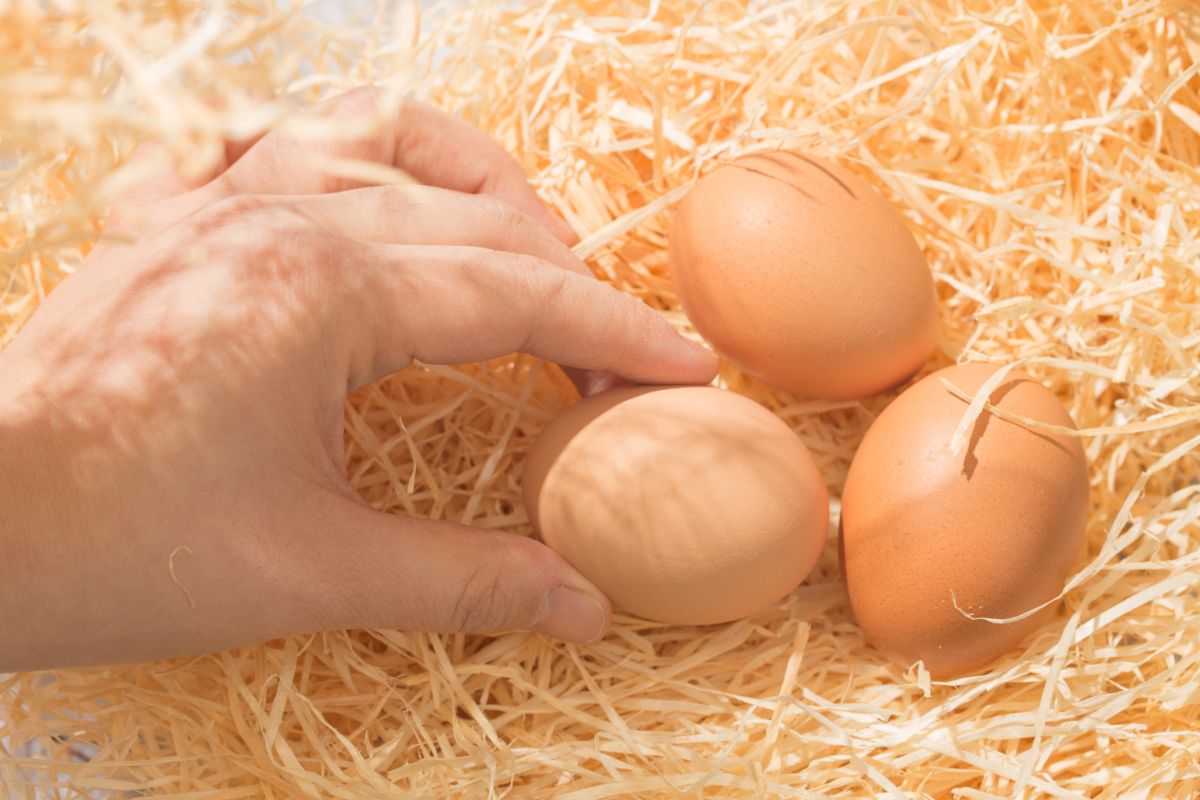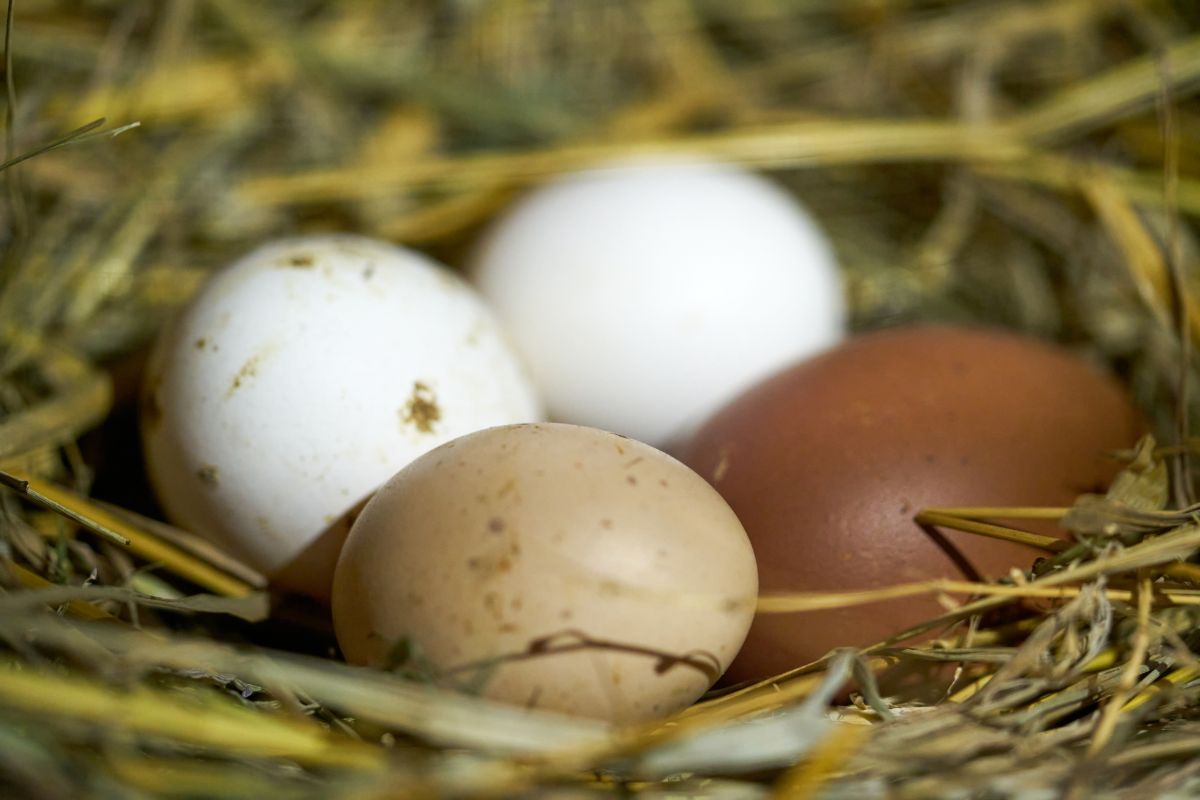Ever wondered, "how do chickens make egg shells?"

I know I have.
Everything about an egg is a miracle, and nothing fascinates me more than how the shell is formed.
It's one of those things, if you think about it for too long it really starts to blow your mind, doesn't it?
Here is a scientific at how hens form eggshells and some other interesting egg-laying facts:
Jump to:
How Do Chickens Make Egg Shells?
To understand how a chicken 'makes' an eggshell, you need to understand the process of how a hen's reproductive system creates an egg.
The whole process starts with good lighting conditions, which is why hens need 14-16 hours of quality daylight each day.
The interesting thing about how an egg is formed is that it's actually an inside-out process.
By that, I mean that it's the yolk that first appears, which is what you'll find in the center of an egg and the shell is the last part of the process.
The flow of the process looks like this:
The yolk is released from the hen's ovary and travels down the oviduct.
As it travels, it is gradually covered in layers of albumen (egg white), membranes.
The next layer is the shell membrane, which is a thin, transparent film.
You may have seen the membrane without realizing it when cracking open an egg, it's that elastic-type of film that sometimes stops the contents of an egg from coming out when a shell is cracked.
Then finally, the calcium carbonate shell (eggshell) is added.
This whole process takes place in just 26 hours!
Related - More on speckled eggs and why the inside of eggshells are white!
What Is an Eggshell Made Of?

Eggshells are made of 95% calcium carbonate and the other five percent is made up of protein, magnesium, and a small amount of iron.
This perfect balance of compounds is required to make an eggshell exactly how it is.
Any nutritional imbalance and an eggshell can easily be deformed.
What Do Hens Need to Eat to Maintain Healthy Eggshells?
A diet rich in calcium is essential for hens to lay strong and healthy eggs.
Hens need around 3-4 grams of calcium per day to produce an eggshell.
This is why you'll see calcium carbonate or other calcium supplements added to chicken feed, which is the primary way most hens can get the calcium they need.
Other than that, oyster shells or limestone can be given to hens as a calcium supplement.
It's important to note that there are different types of feeds on the market, and layer feeds have been specially formulated for laying hens.
Layer feeds contain all the nutritional content laying hens need to maintain optimal health while laying healthy eggs.
How Is the Color of an Egg Determined?
The color of a chicken's eggshell is determined by the breed of chicken, and more specifically the genes of that breed.
Contrary to popular belief, eggs are really available in quite a wide range of colors!
There are five primary eggshell colors - white, brown, blue, cream, and olive. Eggshells can also have different shades and variations of these colors.
An interesting thing to note is that all eggshells start out white. The color pigment is added to a white shell to give it its color.
This is why the most common colors of eggs are white and brown, as the main pigment is brown.
Next time you crack up an egg take a look inside and you'll see what I mean. The inside of the eggshells are white!
Do Different Color Eggs Taste Different?

No, the color of an eggshell does not affect the taste or nutritional value of an egg.
The only difference you'll find is in the price.
For example, brown eggs are typically more expensive than white eggs as they're often seen as being higher quality.
However, this is simply a myth!
The things that affect the taste and quality of an egg is how the hen that laid the egg was raised and what that hen ate.
For example, hens that are free to roam and eat a varied diet of insects, greens, and other natural foods will lay eggs with a richer flavor than factory hens.
How Strong Is a Chicken Egg?
The strength of an eggshell is important to protect the developing chick inside.
It's impressive how strong an eggshell is when you take into account how thin the shell actually is.
This site states that a chicken egg has a compressive strength of 100 lbs!
It's another miracle of nature. The shape, size, and composite makeup of an egg is perfectly balanced to give the chick inside all the protection it needs while it's developing.
I bet you've come across the occasional egg that was tough to crack, too, right?
I know I've had to give some eggs a hard tap when cracking them open before.
On that note, if you're wondering how a baby chick breaks their way out of a shell, I explain in this post how they're born with an egg tooth.
In Summary
As you can see, there's a lot that goes into making an eggshell!
It's amazing how such a small thing can be so complex - and strong!
I hope you enjoyed learning a little bit about how chickens make eggshells. Next time you crack one open, maybe you'll have a closer look at the shell.





